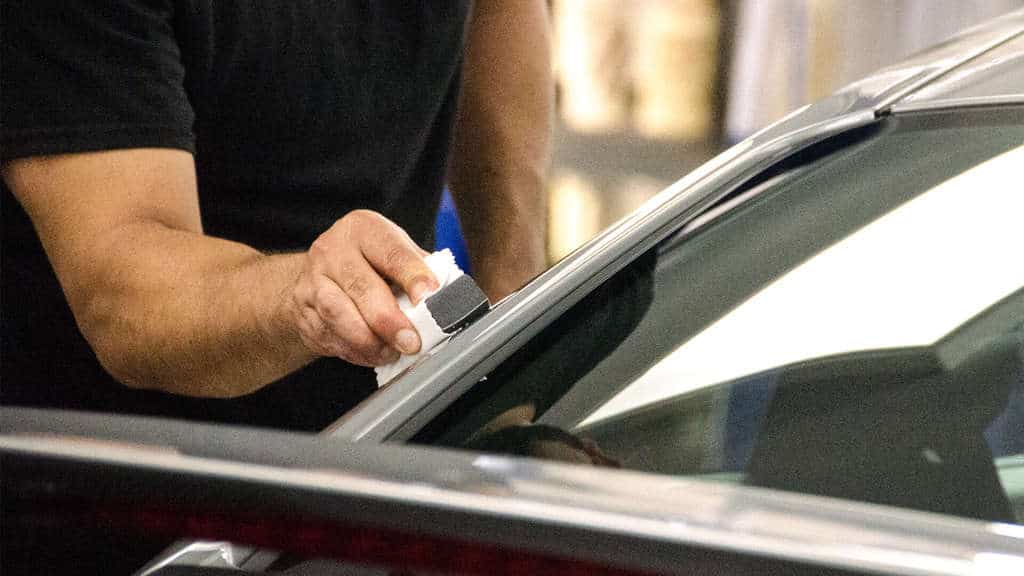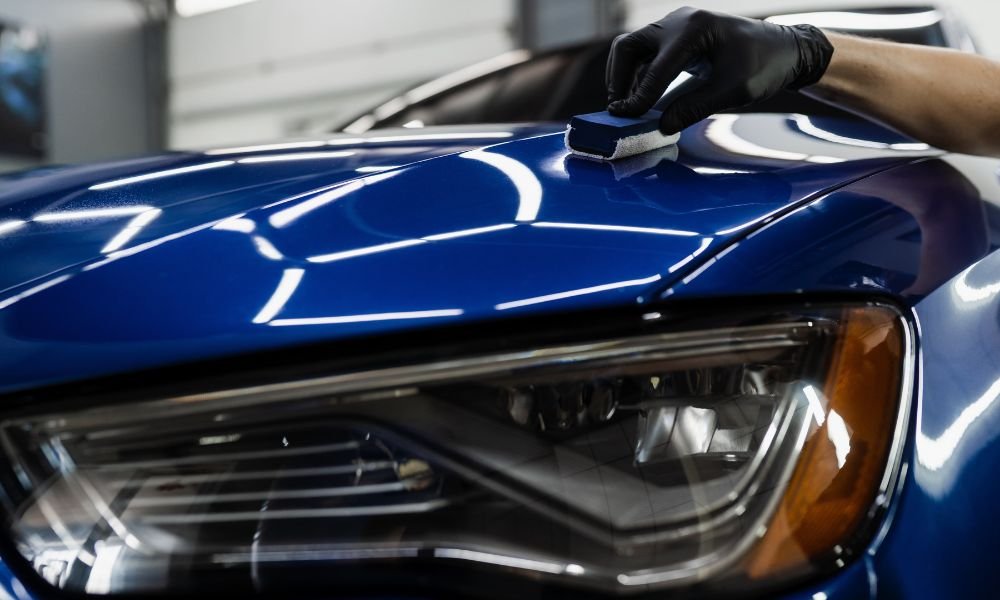The Increase of Ceramic Coating: Why It's the Best Option for Auto Enthusiasts
The Increase of Ceramic Coating: Why It's the Best Option for Auto Enthusiasts
Blog Article
The Duty of Ceramic Covering in Securing Your Vehicle's Paint From Environmental Damages
Ceramic finishing has emerged as an innovative solution for vehicle owners seeking to preserve the stability of their car's exterior. As we explore the nuances of ceramic covering, it comes to be evident that the selection to implement this protective measure might significantly affect your automobile's long life and aesthetic.
What Is Ceramic Finishing?
Ceramic layer is a sophisticated fluid polymer related to the external surfaces of an automobile, made to provide a sturdy layer of defense for the paint. This cutting-edge service forms a chemical bond with the automobile's factory paint, creating a resilient and hydrophobic shield. The finish includes nanoparticles that complete the tiny imperfections in the paint, causing a smooth surface that boosts gloss and radiate.
Normally, ceramic finishes are readily available in different solutions, permitting different levels of defense and durability. While some products can last for a number of months, others provide security for several years, depending on the density of the application and ecological elements. The application process calls for thorough preparation, consisting of washing, sanitizing, and polishing the lorry's surface to make sure optimal adhesion of the finish.

Benefits of Ceramic Coating
Among the key advantages of applying a ceramic finishing is the phenomenal defense it provides to vehicle paint. This advanced finishing develops a sturdy layer that shields the lorry's surface from a selection of environmental hazards, including UV rays, acid rainfall, bird droppings, and tree sap. By offering this durable protection, ceramic finishings dramatically lower the risk of fading and etching, protecting the cars and truck's aesthetic appeal with time.
In enhancement to protection, ceramic finishings are renowned for their hydrophobic residential or commercial properties, which push back water and dirt, making it less complicated to preserve a clean car. This self-cleaning result reduces the regularity of washing, conserving both time and resources. Additionally, ceramic coatings improve the depth of the paint's gloss, leading to a sleek and vibrant appearance that elevates the general appearance of the automobile.
An additional significant benefit is the durability of ceramic finishes. Unlike typical waxes or sealers that require regular reapplication, ceramic finishings can last several years, using an economical solution for vehicle owners looking for lasting defense. Generally, purchasing ceramic finishing results in improved longevity, lowered maintenance, and continual aesthetic appeal for vehicle paint.
Just How Ceramic Covering Works
A ceramic covering runs through a chemical bonding process that produces a safety layer on the vehicle's paint surface area. This innovative solution makes use of advanced nanotechnology, where microscopic particles of silica are put on hold in a liquid form - ceramic Check Out Your URL coating. Upon application, these particles bond with the manufacturing facility paint, developing a durable and hydrophobic layer that boosts the car's surface area
The primary part of ceramic finishes, silicon dioxide (SiO2), adds to the layer's stamina and resilience. When cured, the finishing changes right into a tough, glass-like finish that guards the paint from environmental impurities such as dust, UV rays, bird droppings, and tree sap. This molecular bond leads to a surface that is not just resistant to scratches yet likewise less complicated to clean up, as dirt and crud are less most likely to stick.
In addition, the hydrophobic residential or commercial properties of ceramic layers create water to bead and slide off, decreasing the chances of water places and mineral deposits. This safety barrier successfully prolongs the life of the paint and preserves the car's aesthetic allure, providing auto owners a resilient solution for paint protection.
Application Refine of Ceramic Finish
When taking into consideration the application of ceramic layer, prep work is essential to attaining ideal outcomes. Any type of blemishes or scratches ought to be dealt with at this phase, as the coating will certainly bond with the surface underneath.

Ceramic coating is after that applied in small areas, commonly utilizing an applicator pad. The lorry must be left to cure in a controlled environment to allow the finishing to completely bond with the paint.
Long-Term Maintenance and Care
Attaining a successful ceramic layer application sets the structure for lasting defense, but appropriate upkeep is vital to preserving its benefits. Normal washing is crucial; making use of a pH-neutral cars and truck hair shampoo will certainly aid keep the layer's stability without causing damages. Stay clear of automated car cleans that usage abrasive products, as they can compromise the coating's surface.

Moreover, applying a ceramic layer upkeep spray can boost the existing layer, offering an extra boost in security and sparkle. It's advisable to execute this every 3 to 6 months, depending on environmental direct exposure.
Finally, car park in shaded areas or using vehicle covers can stop extended exposure to damaging UV rays and ecological contaminants, better extending the life of your ceramic covering. By sticking to these upkeep techniques, you can guarantee your informative post lorry's coating stays protected and aesthetically appealing for many years to find.
Verdict
In recap, ceramic coating serves as a crucial safety action for vehicle paint, properly shielding automobiles from a variety of ecological dangers. Its ability to produce a durable hydrophobic obstacle not just boosts visual appeal yet likewise substantially minimizes the regularity and intensity of maintenance required. The long-lasting nature of this innovative polymer underscores its worth in protecting automobile stability and look, ultimately adding to a much more durable and aesthetically attractive automobile finish.
Ceramic finishing is a sophisticated fluid polymer used to the external surfaces of a lorry, created to provide a durable layer of security for the paint. Ceramic coatings enhance the deepness of the paint's gloss, resulting in a lively and refined look that raises the overall appearance of the lorry.
A ceramic covering runs via a chemical bonding procedure that produces a protective layer on the vehicle's paint surface.The primary component of ceramic layers, silicon dioxide (SiO2), contributes to the coating's stamina and resilience.In summary, ceramic layer offers as a crucial safety procedure for auto paint, properly protecting cars from a variety of ecological risks.
Report this page